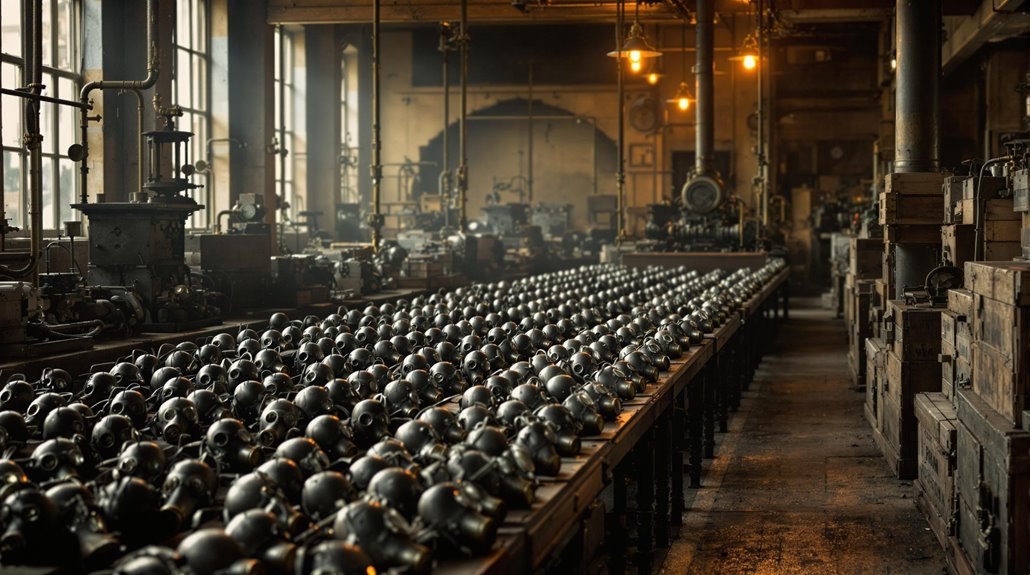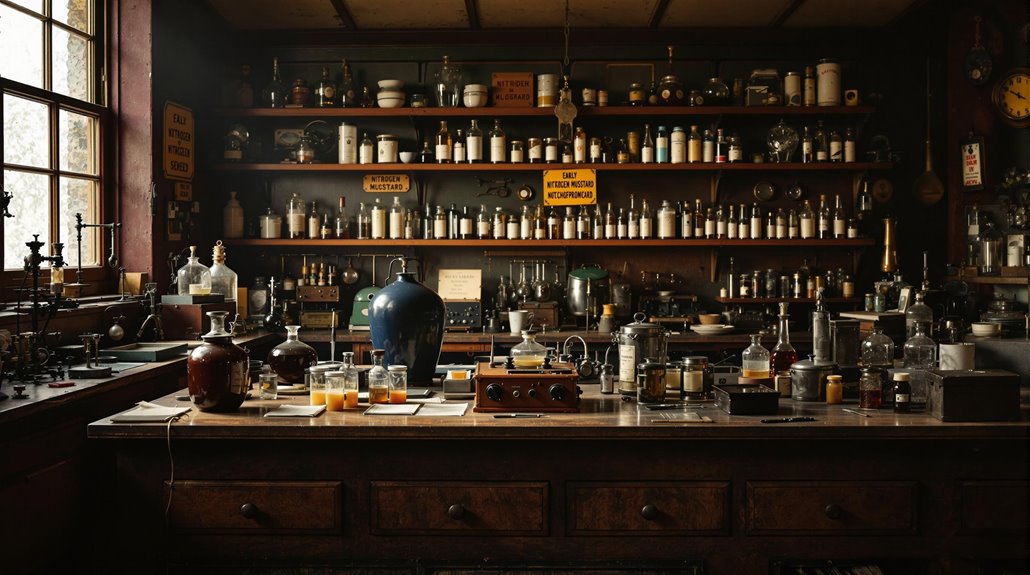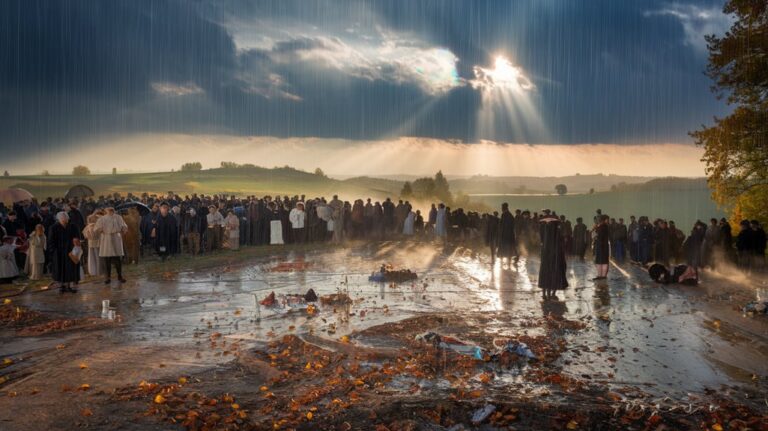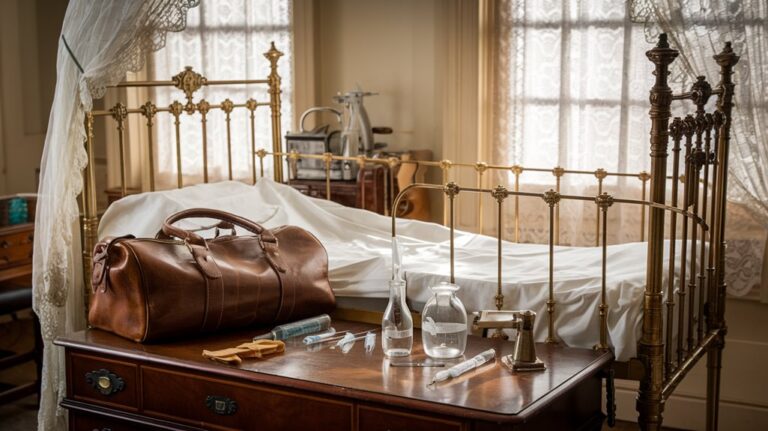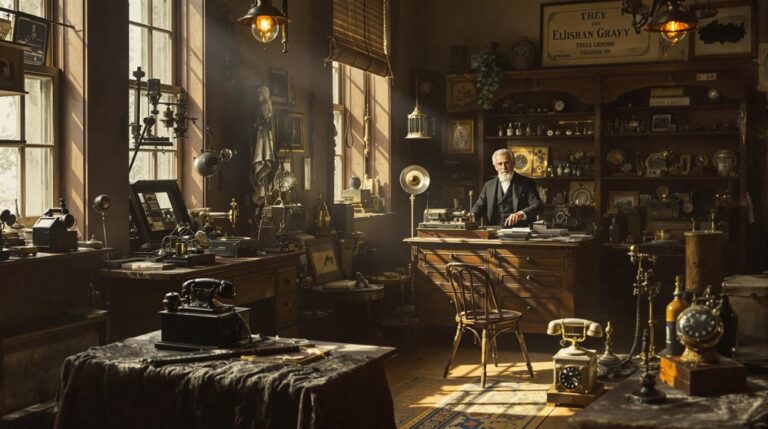From Poison Gas to Chemotherapy: The Surprising Link
You might find it ironic that one of the deadliest weapons from World War I became a cornerstone of modern cancer treatment. When you think about mustard gas, you'll likely picture the horrific scenes from trenches where soldiers struggled to breathe through chemical attacks. Yet this same compound led scientists to develop the first chemotherapy drugs, transforming a tool of warfare into a life-saving treatment. There's much more to this remarkable story of scientific serendipity that challenges our understanding of good and evil.
The Deadly Legacy of Mustard Gas in WWI
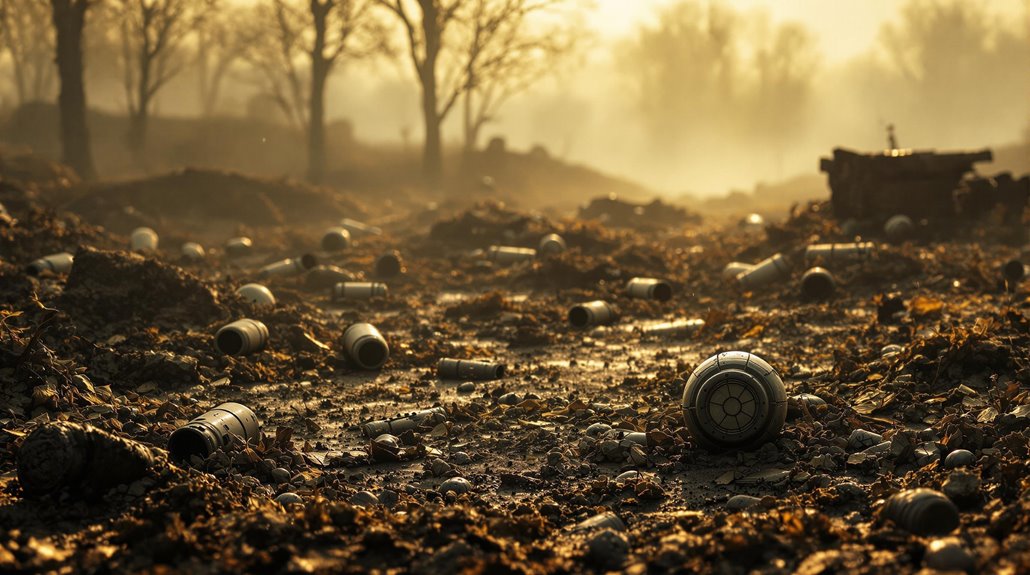
When German forces released mustard gas at the Third Battle of Ypres in 1917, they introduced one of WWI's most devastating chemical weapons.
If you'd been a soldier on that battlefield, you wouldn't have immediately known you were exposed – the colorless agent often went undetected until it was too late. This new form of chemical warfare would go on to account for 90% of British gas casualties.
Soldiers quickly learned that water-soaked rags could help protect against some chemical agents, though mustard gas remained particularly difficult to combat.
The oily liquid would remain active for months in soil, making contaminated battlefields dangerous long after initial attacks.
Once exposed, you'd have faced horrific symptoms: blisters on your skin, eyes, and lungs developing within hours.
The historical impact was staggering – over 186,000 British soldiers suffered from gas exposure, with effects that could last a lifetime. Even civilians weren't spared, with more than 1,300 casualties recorded.
Despite its relatively low mortality rate of 2-3%, mustard gas's devastating injuries required lengthy hospitalizations and often left permanent scars.
An Unexpected Discovery in Bari Harbor
During a routine German air raid in December 1943, Bari Harbor transformed from a bustling Allied port into the site of a horrific chemical weapons disaster.
The sailors exhibited unusual skin blisters and difficulty breathing as the toxic gas spread through the harbor.
Seventeen ships were sunk and six others damaged during the devastating attack.
When bombs struck the SS John Harvey, they released its secret cargo of 2,000 mustard gas bombs, creating a toxic nightmare that would change medical history.
The devastating aftermath left 628 military personnel hospitalized and 69 dead within two weeks.
But amid this tragedy, Lt. Col. Stewart Alexander made a groundbreaking observation: patients exposed to mustard gas showed dramatically reduced white blood cell counts.
This unexpected finding sparked a revolutionary idea – could mustard gas derivatives treat cancers that affect white blood cells?
This accidental discovery led to the development of the first chemotherapy drugs, including Chlorambucil and Mustargen, which continue to save lives today.
Yale's Groundbreaking Cancer Research
Building on the accidental discovery of chemotherapy's potential, Yale University emerged as a powerhouse in cancer research by establishing the nation's first university-based Medical Oncology section.
You'll find Yale's impact on cancer breakthroughs spans over eight decades, starting with their first successful chemotherapy treatment in 1942 at Yale New Haven Hospital. The treatment of patient J.D.'s lymphosarcoma marked a pivotal moment in medical history.
Today, Yale Cancer Center continues pushing boundaries with innovative therapies across 50+ Phase I clinical trials. Their work includes groundbreaking checkpoint inhibitor immunotherapies targeting melanoma, kidney, and lung cancers.
Through their partnership with Smilow Cancer Hospital, 300+ members collaborate on cutting-edge research programs. The Center consistently produces pioneering treatment breakthroughs that transform cancer care.
Yale's commitment to advancing cancer treatment is evident in their impressive output of 2,422 publications over the past five years, solidifying their position as leaders in translational medicine and healthcare innovation.
The Birth of Modern Chemotherapy
The unlikely connection between World War I's deadliest chemical weapon and modern cancer treatment changed medicine forever.
When scientists noticed that mustard gas destroyed lymphatic tissue, they discovered its potential as a cancer-fighting agent. This observation sparked the chemotherapy evolution that's recognized today.
The first clinical trial proved groundbreaking when a patient with terminal lymphosarcoma experienced complete tumor disappearance after nitrogen mustard treatment.
The emergence of DNA structure discovery in the 1950s dramatically improved our understanding of how these drugs worked at the molecular level.
By 1949, you'd find nitrogen mustard as the first FDA-approved chemotherapy drug, leading to remarkable developments in cancer treatment.
Here's how modern chemotherapy transformed healthcare:
- Created over 100 different cancer-fighting drugs by the 1960s
- Established combination therapy as a standard practice
- Improved survival rates across multiple cancer types
- Led to advanced treatments like targeted therapy and immunotherapy
What started as a devastating weapon became the foundation of modern cancer medicine, launching a new era in medical science and patient care.
Overcoming Treatment Challenges
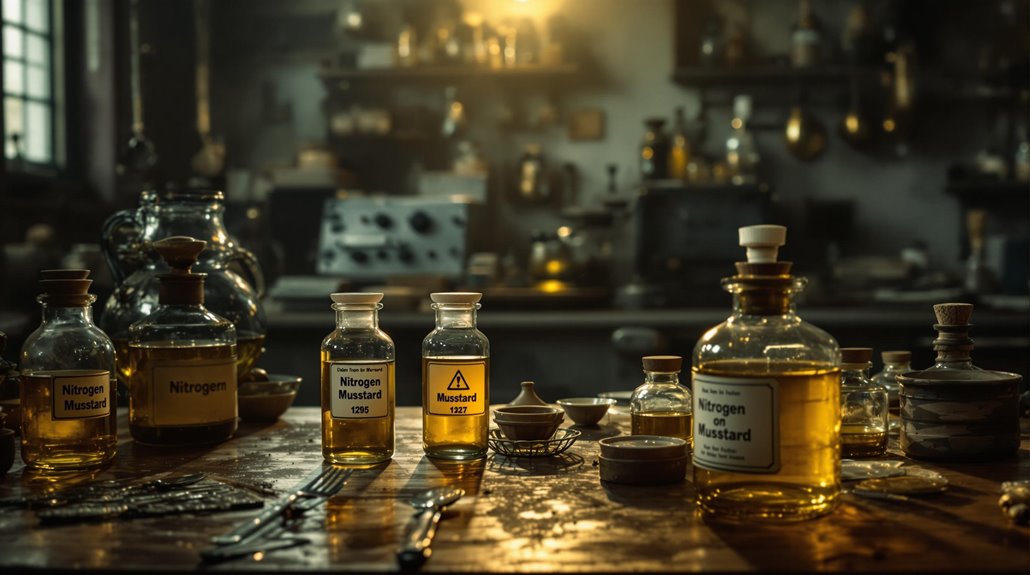
While modern chemotherapy offers powerful cancer-fighting capabilities, medical teams have developed sophisticated strategies to combat its challenging side effects.
 normal fast-growing cells, patients often require multiple supportive treatments simultaneously. Healing and wellness services can be integrated into your recovery plan for comprehensive care.
normal fast-growing cells, patients often require multiple supportive treatments simultaneously. Healing and wellness services can be integrated into your recovery plan for comprehensive care.
Today's drug delivery systems have revolutionized treatment effectiveness.
You'll benefit from advanced methods like nanoparticle formulations and antibody-drug conjugates that target cancer cells more precisely while sparing healthy tissue. Your treatment plan can be personalized through genetic testing and real-time monitoring with liquid biopsies.
If you're concerned about long-term effects, your medical team will closely track potential complications through regular screenings and provide thorough support, including cognitive rehabilitation and psychosocial counseling.
Transforming Medical Science Forever
From its origins in wartime tragedy, chemotherapy's discovery marked a revolutionary turning point in medical science. The cancer evolution that followed would transform healthcare forever, leading to unprecedented medical advancements in treatment options and patient care.
The initial research by Yale doctors Louis Goodman and Andrew Gilman on mustard gas victims provided the crucial breakthrough that launched modern chemotherapy. Early studies revealed that nitrogen mustard compounds could effectively shrink lymphomas.
You'll find chemotherapy's impact on medicine extends far beyond its initial discovery, creating:
- A completely new medical specialty focused on cancer treatment
- Worldwide clinical trial networks that revolutionized our understanding of effective therapies
- The foundation for modern targeted treatments and immunotherapies
- Outpatient treatment protocols that let patients maintain normal lives
This remarkable journey from warfare to healing has fundamentally changed how we approach disease treatment.
The development of over 100 chemotherapy drugs and the success in curing previously fatal cancers stands as evidence of one of medicine's most significant breakthroughs.

